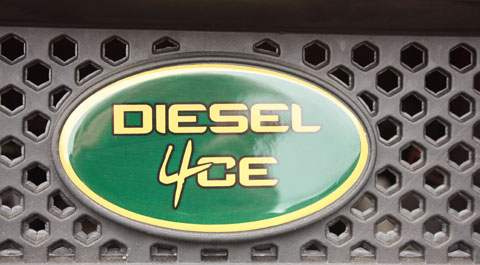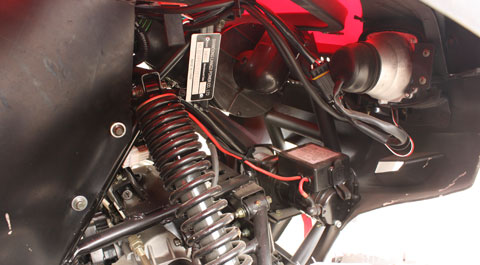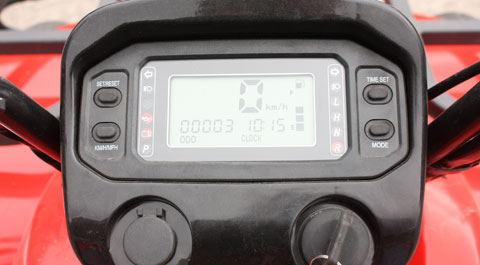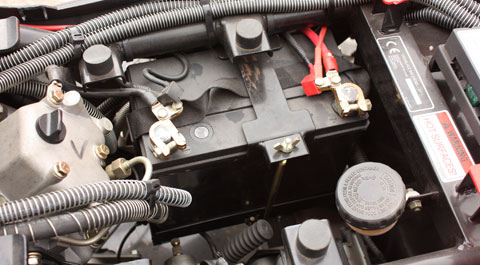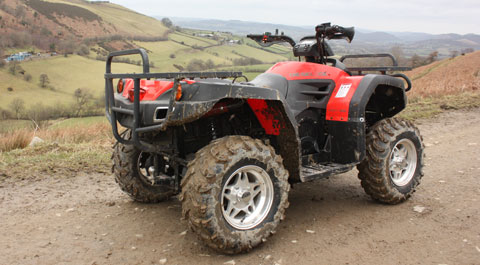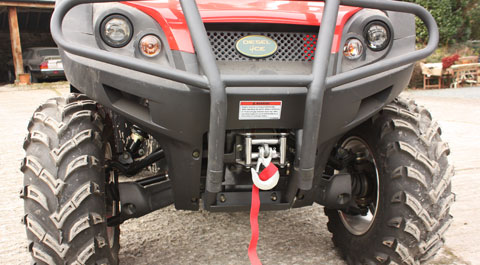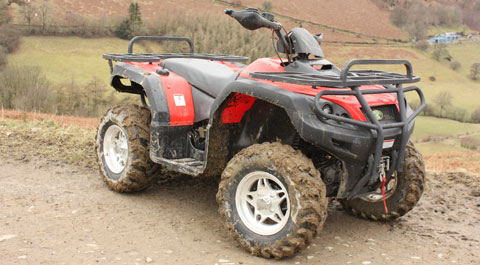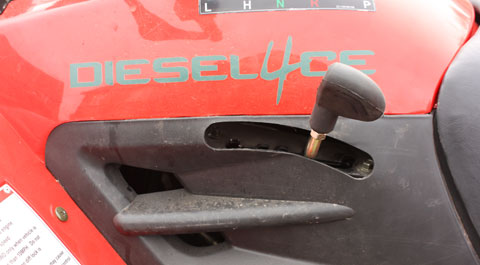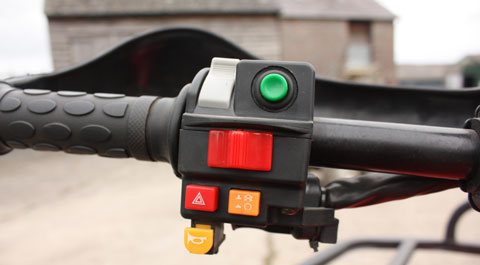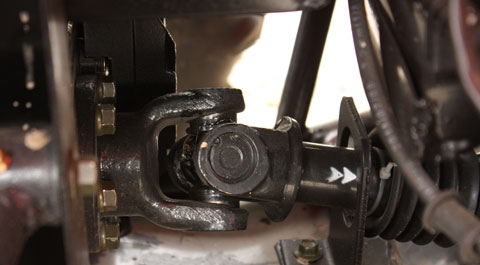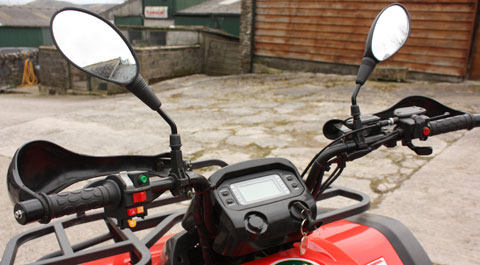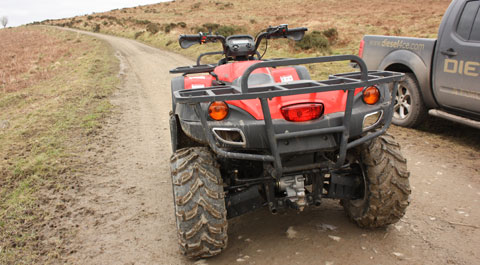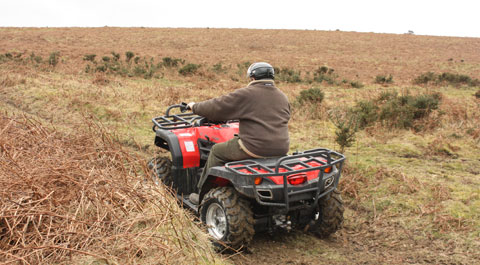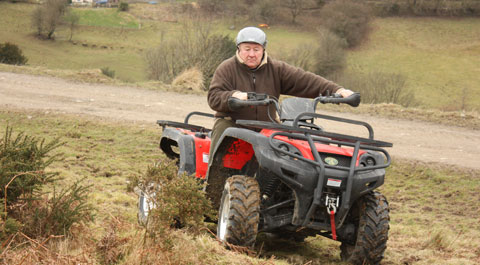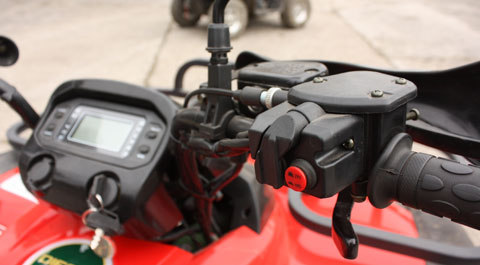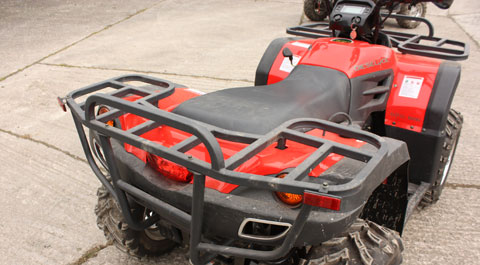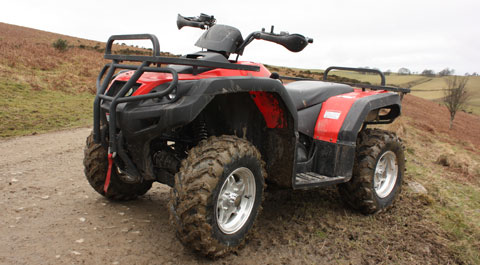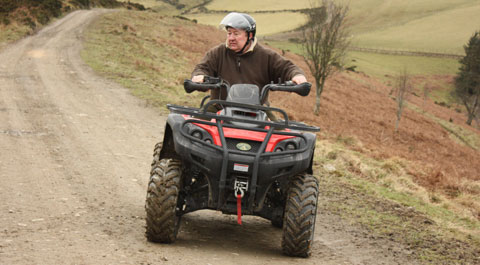Driven: Diesel4ce, the latest diesel burning ATV
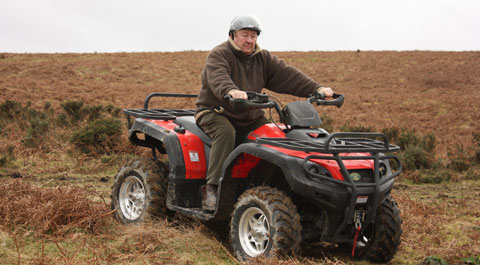
Diesel4ce has had a pretty creditable stab at putting together a workmanlike diesel ATV. Downsides are the inevitable diesel engine clatter and lower top speed, however if you have a job of work to do, this looks like a pretty reasonable way to do it. There’s also the prospect of much lower fuel costs and no more tedious ferrying of jerry cans.
Producing a civilised diesel ATV has proved a tough nut to crack. The big Japanese and US makers have steered clear of diesel engines over the years, largely because their biggest market (the US) still prefers petrol power.
But there have been some workable diesels. Polaris was the first to come to the party with its 11hp D-Bat, but it wasn’t the quietest machine on the block. The EcoQuad from Scottish firm EcoRider was a bit crude and noisy but the maker went into liquidation in 2010.
So the choice of available mainstream machines is now limited to the Arctic Cat diesel, which previous tests showed to be nice to ride and pretty quiet, though the physical size and £8200 price-tag probably limits its market penetration.
But at last year’s Royal Welsh Show, a new £5,950 diesel ATV slipped quietly into the machinery lines. Called the Diesel4ce (pronounced Dieselforce), it was produced by a new start-up company with Glyn Bowen (previously a sheep farmer and Arctic Cat and Kawasaki dealer) as co-director.
The Diesel4ce is an all-new design, Mr Bowen points out, though with some tried-and-tested components. However the biggest weapon in its armoury is the low price and easy availability of its fuel. And that should make it a machine that appeals to farmers in Europe, Canada South Africa and New Zealand.
Thirty dealers have already been signed up in the UK and Mr Bowen says he has had interest from foreign dealers.
“The market is crying out for a decent diesel ATV,” he points out. “Not just because the fuel is cheaper but because it means that you’re not always filling up jerry cans from the local petrol station.”
“A typical ATV on a livestock farm will clock up 3000 miles a year, so using diesel rather than petrol means a £1,000 saving a year,” he says.
- Looks: The red panels make the Diesel4ce look spookily like a standard Honda ATV. It’s a wide machine with chunky front and rear racks and the tall wheelarches make the 25in aluminium wheels look small. Build quality is not much different from a machine from the established makers.
- Engine: The 840cc, v-twin diesel engine comes from Chinese maker Winsun. It’s not a name familiar to many UK farmers, but Mr Bowen says they chose the powerplant because the maker is big and well-established. The engine has apparently performed well in test and a 7500-mile version is working well.
- Transmission: Not surprisingly, there’s a CVT transmission with high and low settings. All the components are known items that are already used on other well-established ATV’s. In fact the transmission is apparently already gainfully employed in a utility vehicle where it happily handles 62hp. Meanwhile the drive belt comes from Japan, the bearings from Germany and the clutches are from the US.
- Frame and suspension: The substantial looking frame was designed in-house but made for Diesel4ce by a Chinese maker. Independent suspension all round is standard with all bushes greasable.
- Brakes: There are four disc brakes all round, with the parking brake working on the rear two. A foot pedal on the right hand side pulls on all four brakes.
- Controls, panels: Many of the high-quality handlebar controls will look familiar to anyone with a Kawasaki ATV and the plastic panels were bought from the same manufacturers that supply the well-known makes.The dashboard shows speed, revs (unusually), miles travelled, time and fuel tank contents, plus whether you’re in 2wd or 4wd (useful).
- Noise: Their high compression levels mean that diesel engines always bang away like a cross between a sewing machine and a demented woodpecker. Car and 4×4 makers cut down the racket by stuffing lots of sound-deadening material between the engine and the occupants, but that’s not an option on an air-cooled engine that’s squeezed into a space that could barely accommodate a pair of ferrets. Start up the Diesel4ce and it ticks over pretty quietly; squeeze the throttle, though and it’ll thump and clatter like the best of ‘em. However it’s no louder than the average diesel farm buggy and the noise isn’t unpleasant – you just get used to it. Vibration (a problem on older diesel ATVs like the D-Batt) was surprisingly minimal.
- Performance: If you’re buying a diesel-powered ATV, you need to banish all memories of driving a petrol powered one – the two are completely different. A petrol ATV accelerates like a motorbike (which it essentially is) so you spend much of the time trying to match your speed to the terrain. A diesel ATV, on the other hand, whirrs along until it reaches maximum speed and then sits there happily chugging along. It can seem slow to start with but you soon get used to it. In fact the sensation is not too different from driving a farm buggy/utility vehicle.Having said that, drive take-up is very quick and the engine is amazingly responsive. Top speed is 35mph, a bit lower than a petrol ATV, but it doesn’t seem to take much longer to get to places.
- Steering and manoeuvrability: ATV rollovers are always a danger on hilly land, so Diesel4ce deliberately widened the machines’ track to make them some 100mm (4in) wider than most ATVs.Added to the weighty engine, that sounds like a recipe for steering that is heavier than last week’s rice pudding. In fact the machine was surprisingly light to steer even at slow speeds and certainly no worse than any petrol ATV. The company says it will probably offer power steering on the Mark II model. Remember that you may need a wider trailer to transport it in, too.
- Ride and braking: The ride is somewhat harder than your average petrol ATV (it has to be to cope with the extra weight) but you get used to it pretty quickly. You can hit humps and hollows quite fast on a downhill slope without losing controlDownhill engine braking is often an issue with ATVs. The Diesel4ce has an unusually progressive braking system. To start with there seems very little engine braking at all, but then it starts to pull you up quite quickly, to the point where you can virtually come to a stop on a steep hill.
- Controls: These mostly work well, with the dash helpfully telling you whether you’re in 2wd or 4wd. However selecting high and low range on the left-hand side lever was trickier. The lever goes in without too much complaint, but you find yourself peering to see it’s moved to the right place.
That would no doubt get easier with familiarity, but a better lever guide system (maybe with a second decal higher up) would make life easier.
- Brakes: The parking brake is best used as just that – it didn’t provide a lot of braking when you’re on the move. However the foot-brake pulls you up pretty sharply of you stamp on it.
- Engine: Winsun air-cooled 840cc, 22hp, 41Nm 2-cyl diesel
- Transmission: CVT + 2 ranges
- Drive: Selectable 2wd and 4wd + front diff-lock
- Weight: 400kg
- Load rack capacity: Front 25kg, rear 40kg
- Towing capacity: 450kg
- Fuel tank: 19 litres
- Typical fuel consumption – 62mpg
- Winch and road-legal lighting pack included
- Price: £5,950 + 2 year’s warranty.
- More details: ww.diesel4ce.co.uk

